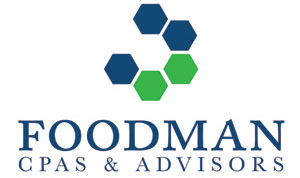Are you at Risk for a Tax Time Surprise? was published by JD Supra on 3/5/19.
There will be Taxpayers whose 2018 federal income tax withholding unexpectedly falls short of their tax liability for Tax Year 2018. IRS states that
there are Taxpayers at most risk of having too little tax withheld, especially if these Taxpayers didn’t update their withholding earlier in 2018. According to IRS Regulations, Taxpayers who do not pay enough throughout the year may end up paying a penalty.
Paying a Penalty? Yes, there a penalty for not timely paying “enough tax”
Taxpayers are supposed to pay income tax as they earn or receive income during the year. Taxpayers accomplish this either through payroll withholding or by making estimated tax payments. A Taxpayer that didn’t pay enough tax throughout the year, either through payroll withholding or by making estimated tax payments, may have to pay a penalty for underpayment of estimated tax. Most taxpayers are able to avoid this penalty if they owe less than $1,000 in tax after subtracting their withholding and refundable credits, if they paid withholding and estimated tax of at least 90% of the tax calculated for the current year or 100% of the tax calculated on the return for the prior year, whichever is smaller.
Taxpayers at Risk for not paying “enough tax” are:
- Two-wage-earner households
- Those who itemized in the past who now choose to take advantage of the increased standard deduction
- Employees with non-wage sources of income
- Those that participate in the “sharing economy”
- Those that have complex tax situations (foreign bank accounts)
- Those living overseas (Expatriates)
- Those that sold or exchanged virtual currency
- Those that receive a yearend holiday or performance bonus
- Those that received stock dividends
- Those that had capital gain distributions from mutual funds and stocks, bonds, real estate or other property (including virtual currency) sold at a profit
No withholding? Got to “estimate” and pay the IRS directly
Taxpayers with no payroll withholding need to make quarterly estimated tax payments directly to the IRS. Making “estimated tax” payments is the method used to pay tax on income that is not subject to withholding such as: self-employment earnings, interest, dividends, rents, alimony, income from “sharing economy”, unemployment compensation and the taxable part of the Taxpayer’s social security benefits. The IRS has updated Form 1040-ES which includes a worksheet to assist Taxpayers in figuring out the correct tax amount to pay.
Don’t be a Victim of your own Making
The deadline for making a payment for the fourth quarter of 2018 has passed (January 15, 2019). Have you complied with the deadline? Taxpayers ought to take advantage of IRS Notice IR-2019-03 which partially waives the estimated tax penalty for Taxpayers whose 2018 federal income tax withholding and estimated tax payments fell short of their total tax liability for the year. The IRS is waiving the penalty for a Taxpayer who paid at least 85 percent of their total tax liability during the year through federal income tax withholding, quarterly estimated tax payments or a combination of the two. The usual percentage threshold is 90 percent to avoid a penalty. Taxpayers ought to consult their Tax Specialist for assistance in the penalty waiver computation. Moreover, Taxpayers are encouraged to review the new and updated FORM 1040 and sketch out a tax return with the assistance and guidance of a Tax Specialist.
https://www.jdsupra.com/legalnews/are-you-at-risk-for-a-tax-time-surprise-40953/





